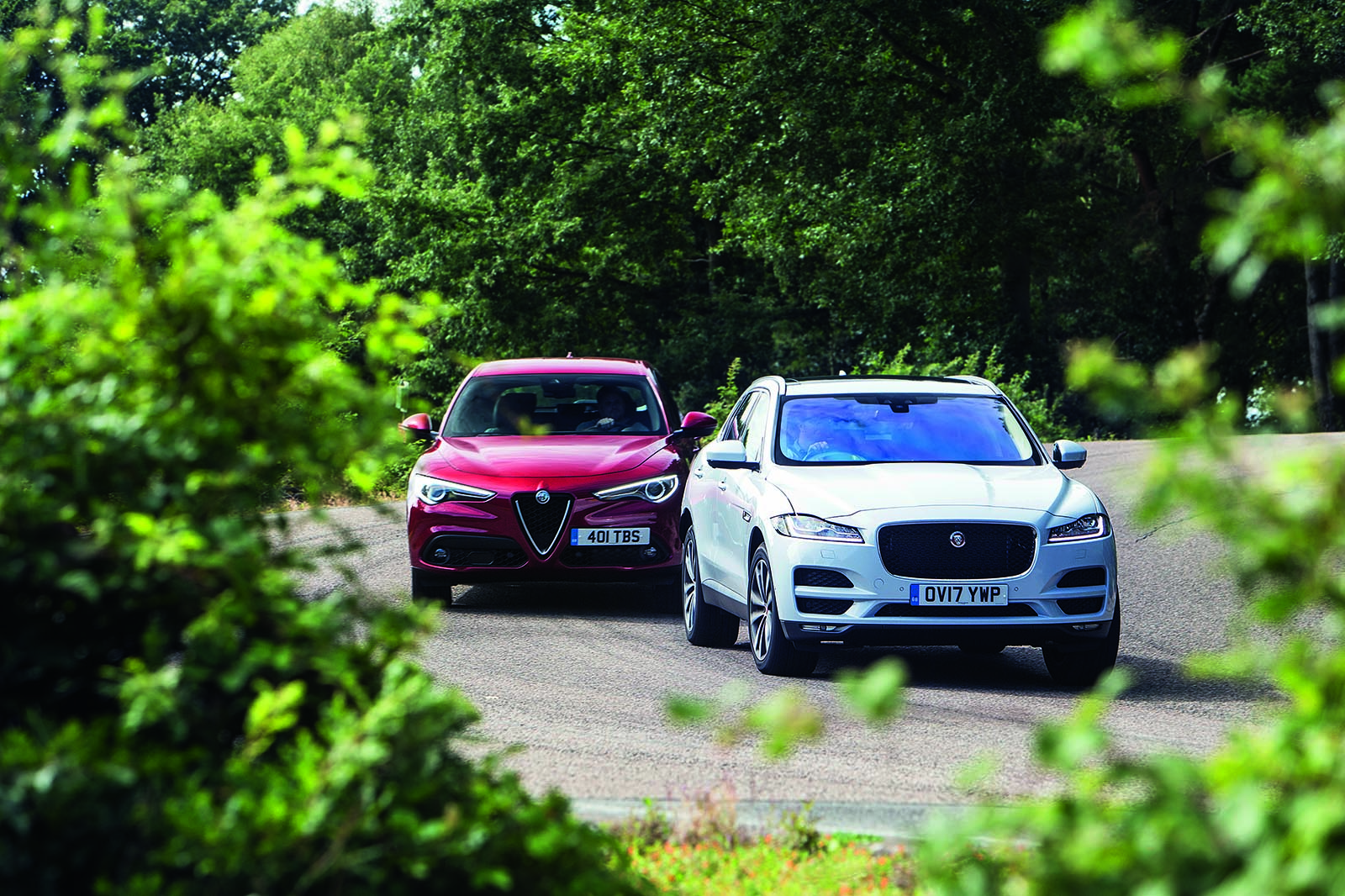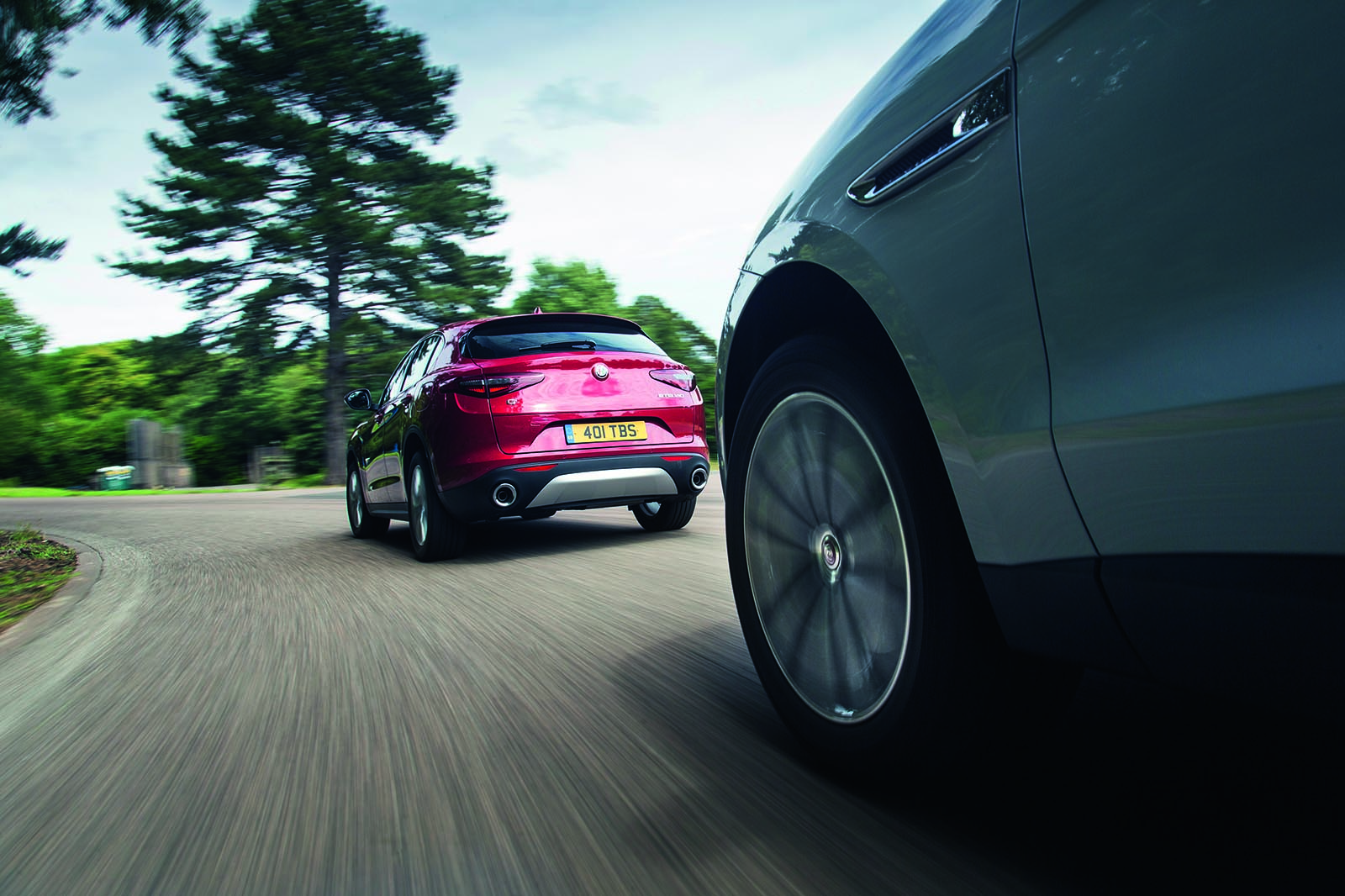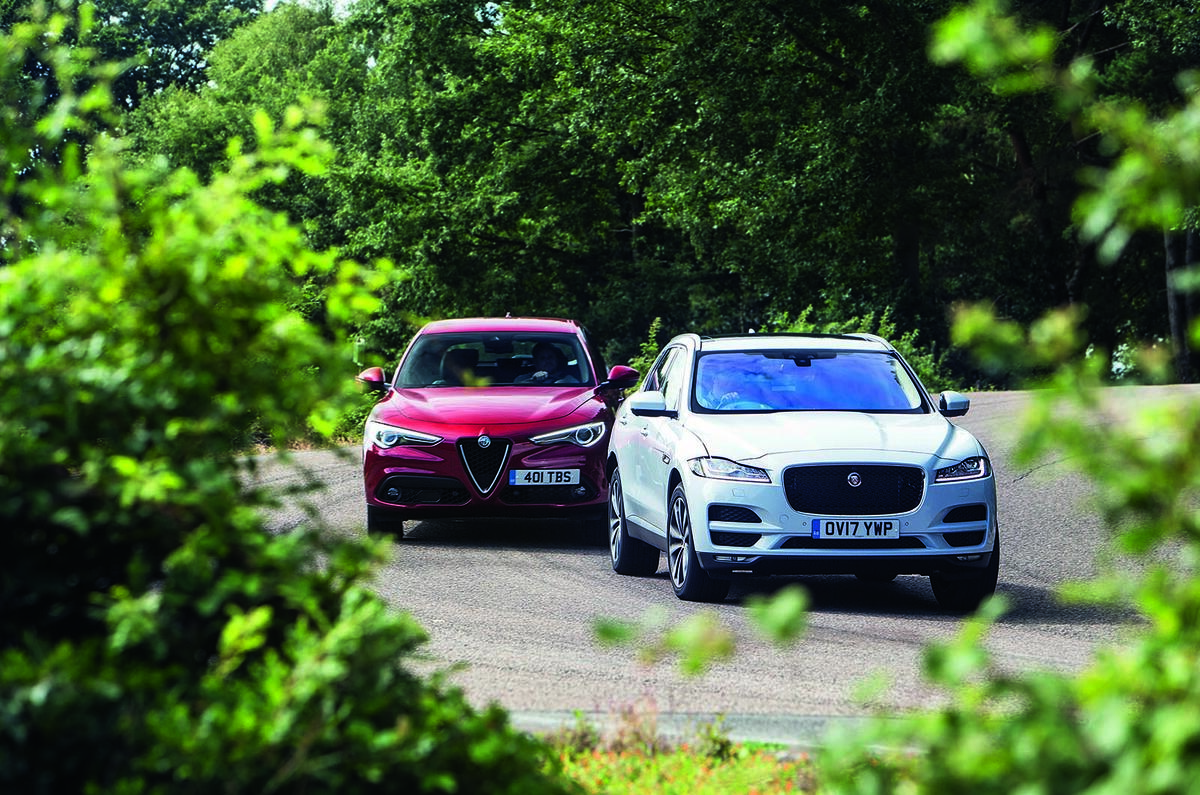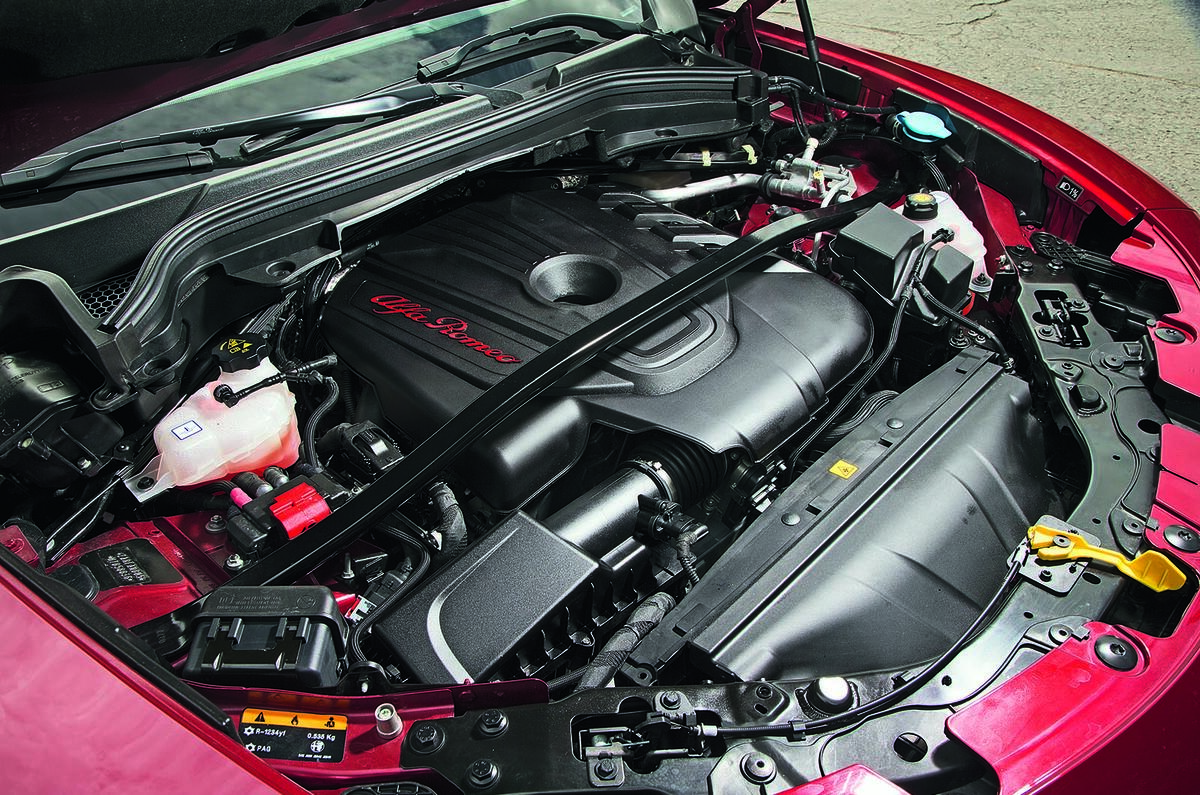Jaguar and Alfa Romeo are car makers with an awful lot in common, when you come to think about it. And although I dare say the management at neither Gaydon nor Turin would particularly welcome the observation, they seem fated to compete more closely than ever in the developing premium car market of the near future.
Both brands attract a certain sort of buyer; one with a preference for a classically good-looking driver’s car and, quite possibly, a subscription to a car magazine not unlike the one you’re now reading. A certain sort of buyer like you and me, in short. And both car makers have aspirations one day to stand shoulder to shoulder with the German premium-branded automotive industry powers – although it won’t be any day soon.
Jaguar is currently significantly more successful than Alfa on a global basis, but you need go back less than a decade to find a time when the Italian outfit was much the bigger of the two in volume terms. And yet both brands shifted an almost identical number of new cars to European buyers last year: 66,000, give or take a few. For the next decade or so at least, ‘Jaguar versus Alfa’ should be a coverline that crops up time and again on the front of Autocar – and I’d like it think it’ll always describe a story worth reading.

We’ve had one instalment of the Jaguar-versus-Alfa battle already this year, when a Giulia 2.2-litre diesel saloon dominated an XE 2.0d in a group test for driver appeal, only to surrender the initiative and ultimately lose out as a rounded premium product. Now for instalment number two.
Neither Jaguar nor Alfa Romeo has been a member of the SUV-making fraternity for long but, with the introduction to UK showrooms of the new Stelvio this month, both are now well and truly in the club; and, since both are intent on a fast rate of growth, neither can really afford not to be. Jaguar introduced the Jaguar F-Pace last year but has taken until now to complete the car’s model range, with the addition of the high-powered four-cylinder diesel engine that many will consider the optimum propulsive option: the new Ingenium 25d. Unfortunately for Jaguar, that has happened just as the first real challenger to the Jaguar F-Pace’s unique sporting selling point among its immediate competitors has materialised, in the shape of the Alfa Romeo Stelvio 2.2-litre diesel – a car that’s not only cheaper than the F-Pace but also lighter and, on paper, quicker-accelerating and more efficient.

Suddenly, the questions we must address over the coming paragraphs rack up faster than bricks in Nick Knowles’ latest garden wall. Will Jaguar Land Rover’s big-hitting four-pot diesel finally deliver the goods here when it has so far failed to in the new Range Rover Velar, and when sampled elsewhere? Have Alfa Romeo’s engineers successfully transferred the best bits of the Alfa Romeo Giulia’s driving experience onto the Stelvio – while improving the saloon’s standard of ride comfort, as we’d all hope they would on an SUV? Will the Stelvio’s perceived quality be any better than the Giulia’s?
Furthermore, who now makes the default choice for enthusiastic drivers among family-sized premium-branded SUVs – and just how good a driver’s car is that, exactly?
Film star looks
The Stelvio does have a certain Hollywood movie star look about it – mostly because it’s a little bit shorter in real life than you’d imagined it might be. Having an F-Pace on hand as a measuring gauge only confirms that. The Alfa’s ride height and belt line are highish but not quite up there with the mid-sized SUV class average. Its roof line is curvy and relatively short and its rear screen is fairly raked. In all three respects, it makes the Jaguar look rather conventional as well as quite big and square – but it’s conventional in a good way.
If the first round of this contest is fought on styling appeal, the Jaguar narrowly wins it to my eyes, although neither of these cars is stunning to behold. The F-Pace just seems to ‘own’ its look better than the Alfa. It’s more comfortable in its sheet metal somehow, whereas the Stelvio looks a little like a car designed by separate teams, in separate rooms, who couldn’t agree if they were making an SUV, a crossover or just a Giulia in platform shoes.

Take a seat inside these two cars, one immediately after the other, and you can’t mistake the fact that the Jaguar is the bigger car with the higher driver’s hip point, although the Alfa Romeo manages to compete with it on interior space by virtue of better packaging. If I was an owner with grown-up kids or adult passengers to carry frequently, I’d consider the F-Pace the marginally more practical car by dint of it having a more comfortable second row and a bigger boot, but that’s true mostly because you sit lower than you expect to, and with knees more bent, in the back of the Stelvio.
In the front, Alfa Romeo’s choice of plastics, leathers, garnishes and switchgear is no disgrace at all. Compare it with what’s in the F-Pace, though, and you’ll find all the evidence you need to support the conclusion that one of these car makers is an awfully long way further down the road to becoming a maker of fully realised premium cars than the other.
During the early half of the past decade, I remember comparing the apparent cabin quality of a Jaguar X-Type with that of its contemporaries from BMW, Audi and Mercedes-Benz and doubting that its maker would ever close such a yawning gap. And yet Jaguar has done it; perhaps not closed it entirely, but certainly narrowed it enough to make the difference relatively unimportant today – at least for those who buy into Jaguar’s other established strengths.

The F-Pace’s cabin isn’t quite the equal of an Audi Q5’s or a Mercedes GLC’s on rich luxury feel or expensively hewn material quality and solidity, but it’s close enough. The Jaguar’s leathers are soft and attractive, its mouldings mostly tactile and well finished, and its switchgear rubberised and robust in feel. The car’s infotainment system is nicely navigable and sophisticated and it does most of what it needs to in order to stand comparison with the best in the segment. There’s also a sense of effortless warmth and good taste here that the German alternatives don’t easily conjure.
As for the Stelvio’s cabin, it definitely has less ground to make up on the established premium elite now than the X-Type had back then – but plenty of it all the same. The Alfa’s front seats are very comfortable, its controls are well placed and its instruments are mostly clear and readable. But there isn’t a single moulding here that you could substitute for its opposite in the Jaguar without it grating. Every grained finish is rougher, every stalk, dial and button feels cheaper and even the leather seats aren’t as appealing to the touch.
As a place in which to travel, the Stelvio’s interior is plainly the product of precisely the same attitude that brought us the Giulia: ‘We can’t afford classy, so let’s aim for well stocked and inoffensive and build upwards from there’.
Start your engines
There’s a hint of clatter from the Alfa’s 2.1-litre engine that you can hear over the more muted growl of the Jaguar’s motor when both cars are parked and idling fairly close by. But that would suggest the British-built car is also the more mechanically refined of the two from the inside and on the move, which isn’t so because it’s the Alfa’s engine that actually settles to the more civilised level at a mixed cruise.
In fact, the Stelvio’s diesel powertrain is plainly more than a match for the F-Pace’s in every dimension that counts. That may surprise a few people who have studied the specification tables (above right) but it’s unlikely to if you’ve been following our recent reports on Jaguar Land Rover’s other Ingenium-engined diesel models. Just like in all of its various relations save perhaps for the Land Rover Discovery, this 237bhp oil-burner falls short of your expectations on performance, flexibility and refinement in the F-Pace – whereas Alfa’s 207bhp motor just seems more torquey and more responsive than you guess it’ll be.

The Stelvio’s 0.6sec on-paper advantage over the F-Pace over the 0-62mph sprint is clearly represented in the real world, where the Alfa is quite plainly the quicker of these two cars. The F-Pace hesitates in response to a decent waft of accelerator pedal, both from a standstill and when you want to pick up speed when rolling, but the Stelvio is quick to knuckle down and get on with it. The Alfa feels strong and energetic through the mid-range, where the Jaguar seems more treacly, as though it’s saving itself for a high-revving pay-off that never quite arrives.
But powertrains aside, there’s better news for both camps because, driven hard, both of these cars handle very well for their breed. They have remarkably high grip levels and a good cornering balance for cars of their size and profile. It’s not sports-saloon level stuff, granted. But it is the kind of poise that’ll let you bowl along as briskly as you’re likely to want to on the road and through familiar corners using plenty of power without running out of body control, having to manage understeer, or having your fun spoilt by a stability control system that nannies the experience half to death.
Which does it better? It depends on the road. On a smoothly surfaced one, well sighted and quiet enough to really open up on, the Alfa does. It’s more firmly sprung than the Jaguar, slightly more grippy and upright, and it feels more agile and incisive though faster bends. The Stelvio steers with greater pace than the F-Pace, too. It’s a genuinely encouraging and precise car to hustle along and would be an even better one but for the flighty-feeling vagueness of that steering around the dead centre.

Come the bumps without which a British road wouldn’t be recognisably British, though, the Stelvio begins to come unstuck. The Alfa rides a touch excitably over uneven tarmac, suffering plenty of fidget and head toss, and it has little of the fluency or finesse of the cleverly damped Jaguar. There’s an equally noticeable, relative shortage of good suspension isolation here, too, and bumps often thump through noisily.
Back in the silver corner, a hefty, trustworthy, oily-feeling steering completes the sense of carefully polished dynamic superiority that the Jaguar conjures when you drive it back-to-back with the Alfa. When you consider the F-Pace’s better-built, more luxurious and marginally more spacious cabin and boot, you can only come to the conclusion that – despite being outgunned by the Stelvio’s performance and out-handled by it in its way – the F-Pace has done enough here. The Jaguar has proved itself the more complete premium product; our victor on aggregate, if you like, given that its defeats to the Alfa are probably by narrower margins than its victories over the Italian.
But know this: the Alfa Romeo Stelvio has arrived – and it has done so with a bang. It’s well priced; it has the sub-130g/km CO2 emissions that might just get it onto your company car scheme; and it’s a really gifted entertainer. Like the Giulia, it’s a bit of a punt but a hugely likeable presence, too. The Stelvio is an unexpected source of zest, energy and fun in a class that really needs it. It is very welcome. It can stay.
1st - Jaguar F-Pace 25d Portfolio AWD
Rating 4/5, Price £47,115, Engine 4 cyls, 1999cc, diesel, Power 237bhp at 4000-4250rpm, Torque 369lb ft at 1500-2500rpm, 0-62mph 7.2sec, Top speed 135mph, Gearbox 8-speed automatic, Kerb weight 1810kg, Economy 48.7mpg, CO2/tax band 153g/km, 32%
2nd - Alfa Romeo Stelvio 2.2 TD 210 Speciale AWD
Rating 4/5, Price £42,290, Engine 4 cyls, 2143cc, diesel, Power 207bhp at 3750rpm, Torque 347lb ft at 1750rpm, 0-62mph 6.6sec, Top speed 130mph, Gearbox 8-speed automatic, Kerb weight 1659kg, Economy 58.9mpg, CO2/tax band 127g/km, 27%
Related stories:
Alfa Romeo Stelvio review
Jaguar F-Pace review
Alfa Romeo Giulia review




























Join the debate
Add your comment
I'm going to have to compare through driving them
My worry worry is the Alfa is not refined enough... Ride engine and road noise (although I'd get a petrol). Neither get adaptive suspension as standard. When I sat in the Alfa it was fine but i remember the tiny screen and crazy paving hard plastics on the doors. The Jag was better but still based on an XE. Having mentioned refinement it also seems that Jag don't seem to have nailed it on aluminium cars. They also need to fix the lazy responsiveness of their gearbox and engines..
Styling appears to have crept
Styling appears to have crept into Autocar reviews as a way of rating cars, despite being previously left to the reader to make up their own mind. I've already made up my own mind that the Alfa is better looking. And the contrary reviews, writing how one car is superior then declaring it inferior. Odd.
Also, having been in and out of both of these vehicles at various times this summer I couldn't register any notable chasm in perceived qaulity that seems to fascinate nowadays.
If you really need the space and love to tailgate, get the Jag. Otherwise, buy the Alfa.
One last thing
Have you noticed the number of F paces with red leather interiors? Just because this option exists it should lose to the stelvio :)